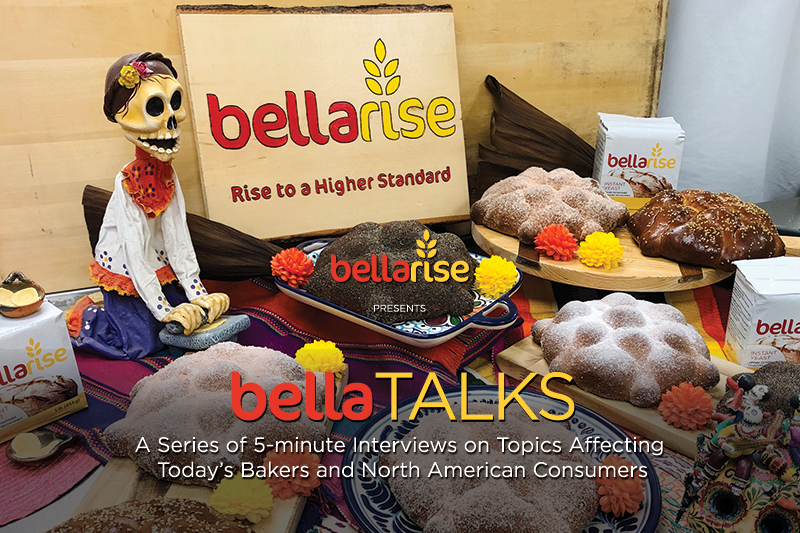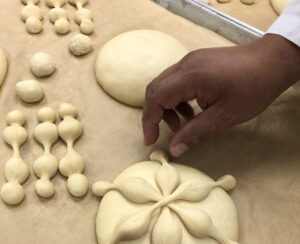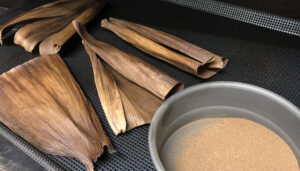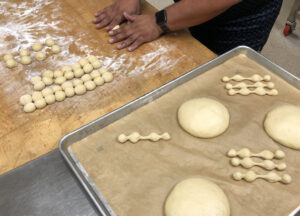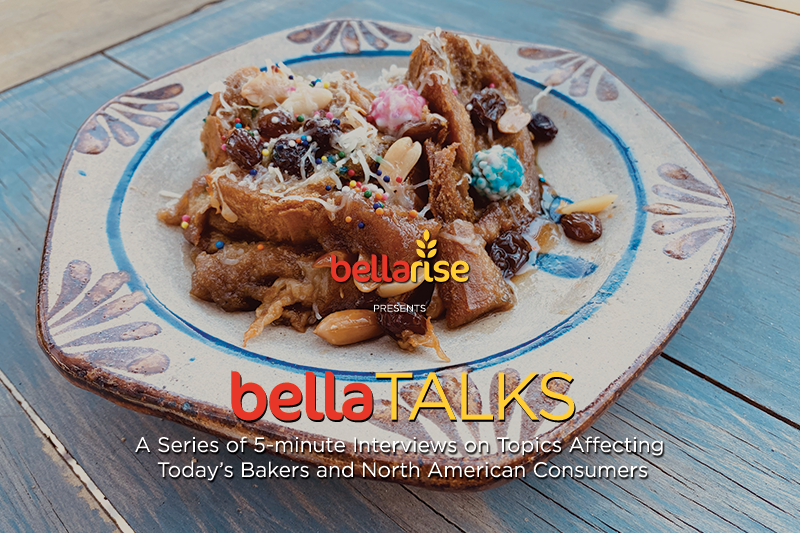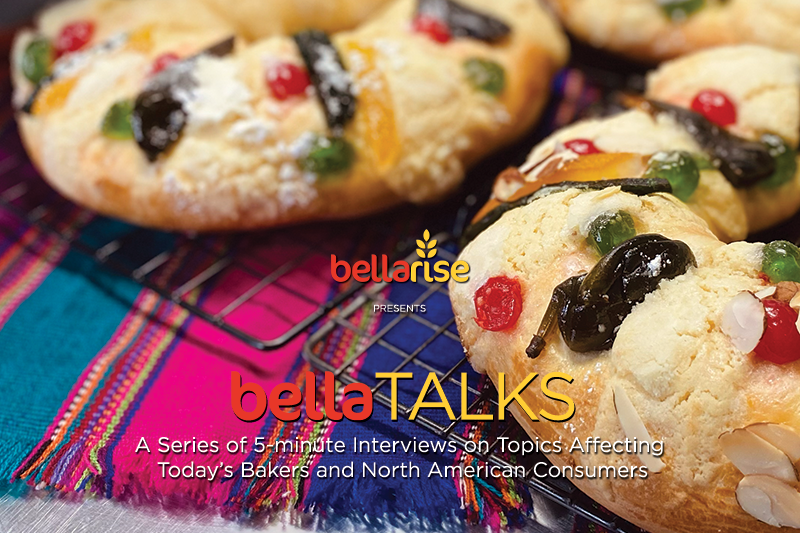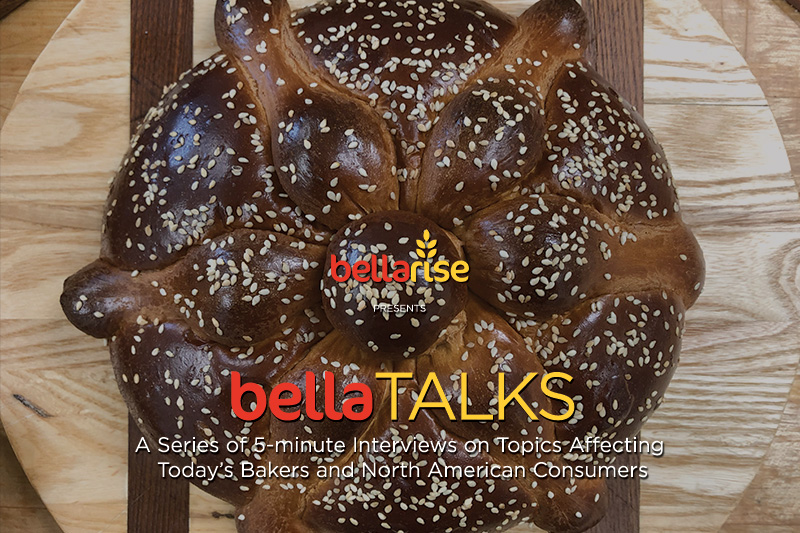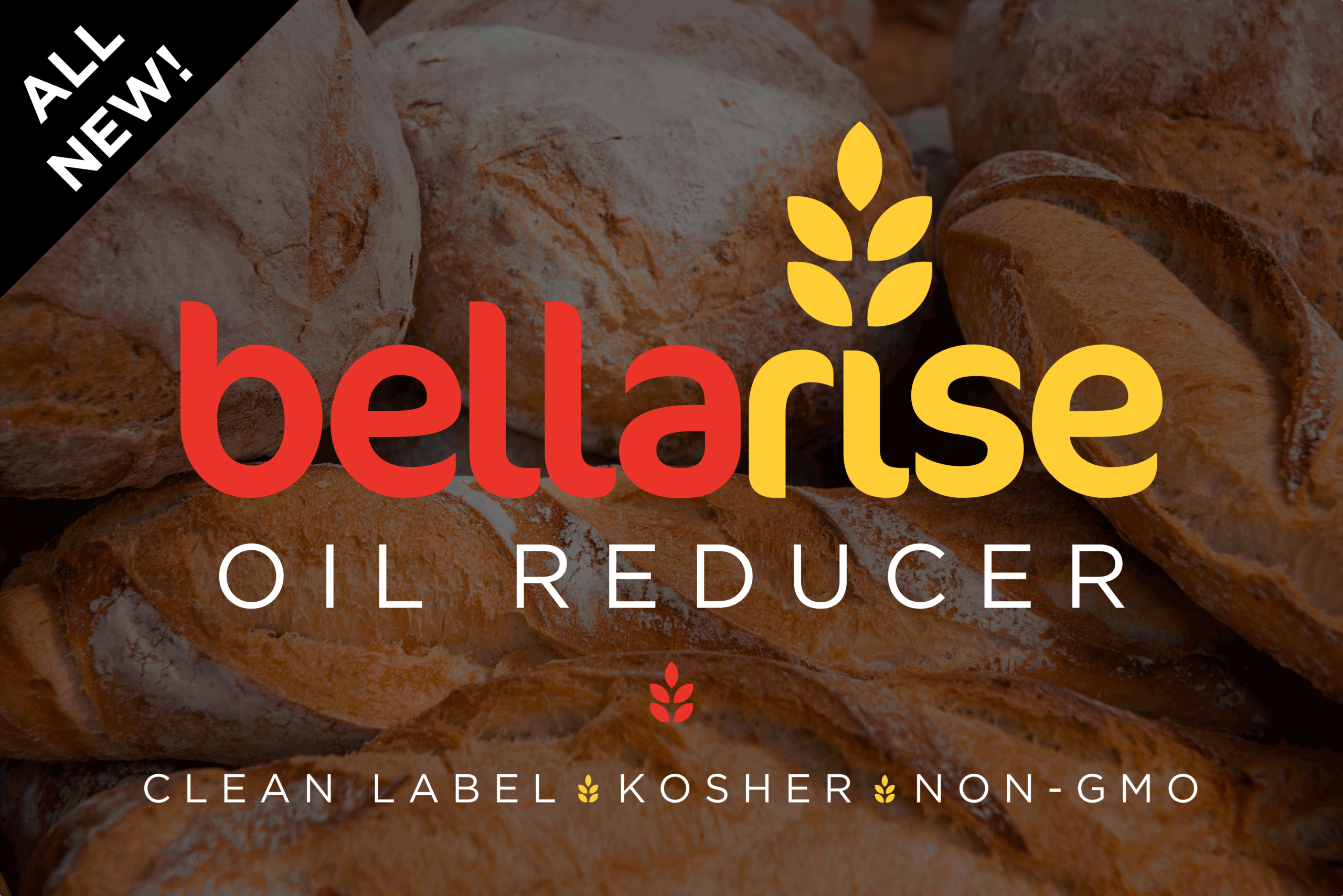PASADENA, CA – 31 October 2023 – Just like there are countless ways to live a good life, there are many ways to bake pan de muerto (which translates to “bread of the dead”) that is so good it could tempt the dead to come back to life! In Mexico, Dia De Los Muertos (or Day of the Dead) shares a date with All Saints Day and immediately follows Halloween; in fact, its origins reach back to both Aztec and European traditions, and among its most notable symbols are the different types of pan de muerto that are served in homes and communities in Mexico and throughout the diaspora.
As we know, times indeed change. Unlike their pre-Columbian ancestors, today’s participants in this widely recognized tradition no longer rely on sacrifices to honor those who have crossed into the afterlife. Contemporary celebrations of Dia De Los Muertos feature beautifully adorned altars decorated with colorful tablecloths; photos and relics of the deceased carefully placed amongst slowly dripping candles; soft yellow and deep red marigolds gently laid like little bursts of color and light emanating from the dark; and other ofrendas, or offerings. To entice the dead to return home, celebrants present their best sweets and baked goods on the altar with love and respect for their loved ones. Pan de muerto, in its various forms, plays a central role on the altar––quite literally, as it is often the centerpiece––and in the feasts marking this solemn, yet hopeful, Mexican tradition. Today, making a vegan or dairy-free form of pan de muerto is easy, and allows more people than ever to partake in this meaningful and delicious part of Dia De Los Muertos.
In the runup to this year’s celebration, Chef Alex Peña, who is Director of Product Development and Technical Services here at Bellarise®, prepared three versions of pan de muerto: one brushed with vegan butter and covered with sesame seeds, another layered with pink and white sugar on top with some orange zest, and the final version called pan de muerto negro (i.e. black pan de muerto) enrobed with white sugar and a black powder derived from blackened cornhusks (known in Mexican culture as ceniza de totomoxtle). “During the Conquista, the Spaniards replaced many Aztec traditions, such as the apparent use of a beating heart in certain Aztec celebrations honoring the dead. In this case, they used these sweet breads. Of course, history shows that the Spanish conquistadores brought the wheat berry with them, so bread became a big part of Mexican tradition many centuries ago. The names may vary at times, but the idea is the same. For example, in southern Mexican states like Oaxaca, we see the use of pan de animas, or soul bread, rather than the term pan de muerto,” Peña says of the history of bread and pan de muerto in Mexico.
Peña also goes into how this traditional bread’s structure tells much of its story. “Pan de muerto is round to symbolize the circle of life. The bone-like shapes draped along its sides represent the canillas, or bones (or tibia, to be more specific) of the deceased, and they may be seen as teardrops, as well. The spherical piece on top represents the skull of the deceased.” As mentioned earlier, there are various ways to decorate pan de muerto. Traditionally, white sugar symbolizes deceased children honored on Dia De Los Muertos, while pink sugar honors adults who have passed on; a relatively new variation seen in Mexico features granulated sugar infused with pulverized blackened cornhusks for subtle vanilla-like flavor notes. Pan de muerto that follows this general format may also be known as tumbas.
As one travels throughout Mexico, even more adaptations are found, some of which use agua de azahar (or, orange blossom water), orange zest, rose water, and/or anis. Notably, pan de muerto is as much a fragrant bread as it is a sweet bread, with its aroma being used to awaken and entice the dead to return to the realm of the living. Sweet and rich flavors are meant to be enjoyed by the living, and the senses join emotion to make pan de muerto a very touching way to attempt to reconnect, at least for a while, with those who have passed on to the afterlife.
While pan de muerto’s cultural significance and overall structure remain largely unchanged in Mexico and the diaspora, we see its ingredients vary from region to region, and throughout history. “It was said that the Aztecs would take the blood of the sacrificed to make cakes, which were then presented on their altars. The Spanish changed all of that, making it such that bread became a preferred ceremonial food,” adds Peña. So, it stands to reason that even today’s bakers would experiment with recipes and try vegan and plant-based ingredients when baking pan de muerto for their families and friends to share and enjoy.
Industrial and commercial bakeries can use Bellarise® 5% Brioche Base to bake a dairy-free and plant-based pan de muerto that may be enjoyed by anyone with certain nutritional needs, including the avoidance of dairy as an allergen, and the adoption of a vegan diet. “Pan de muerto is more of a brioche, since it contains eggs, dairy, wheat flour, it’s high in sugar, and it’s flavored with butter, while also expressing citrus aromas. Today, we made a vegan, plant-based version using Bellarise® 5% Brioche Base, which features one of our most advanced enzyme systems that replaces the functionality of the eggs and milk, and there’s no need to give it a long fermentation. We also used vegan butter,” says Peña of this new way of making traditional pan de muerto.
Traditions, when experienced and celebrated, must be authentic for them to have their full weight and meaning. Surely, when replacing ingredients, one must wonder if a vegan or plant-based pan de muerto can still be considered authentic. “The animal-based ingredients, such as the eggs and dairy, have no importance in baking authentic pan de muerto,” clarifies Peña, since the symbols mentioned before matter most.
History shows us how Dia De Los Muertos has changed over the years, along with the way to prepare pan de muerto, regardless of geography. If the goal is to bring people together––the living, as well as those who have passed––to honor the ones we love, then it is very fitting that we find more ways to bring this truly special bread to more families, communities, and bread lovers. “Pan de muerto is all about bringing people together.” Indeed… it is amazing to see how special bread can be, and how it can transcend life itself.

